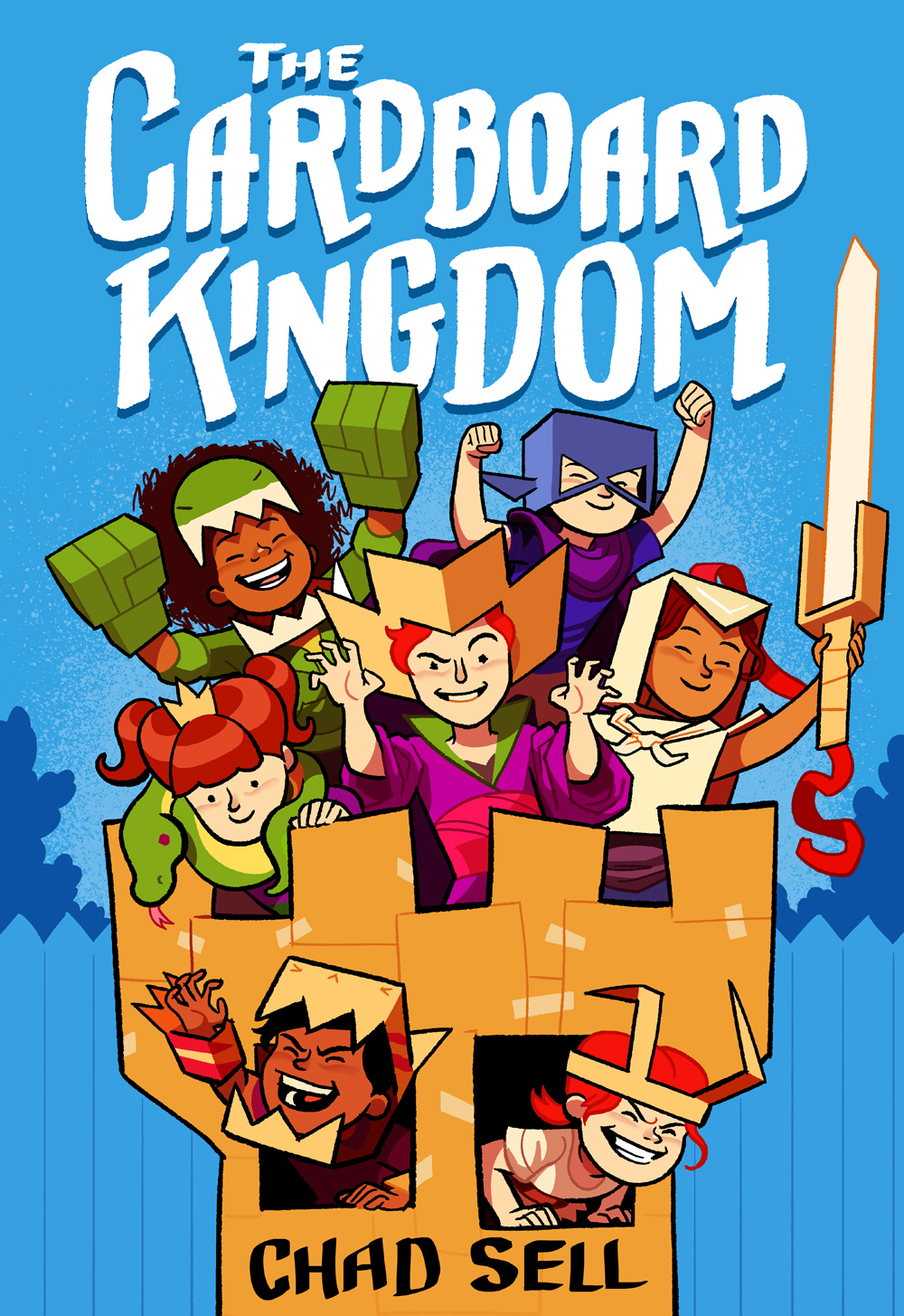 The Cardboard Kingdom
The Cardboard KingdomChad Sell
Knopf/Penguin, 2018 281 pages
Grades 4-6
Graphic Novel
Sell draws from his childhood, creating an
idyllic neighborhood where kids run around loose all day creating a
magical world. The young residents of the neighborhood are of different
cultures, family situations, and ages, yet they all have one thing in common: a
huge imagination. Each child takes on an imaginary personae and they spend a
summer going on quests, fighting battles, and having adventures. We see a
mixture of good guys and bad guys and even some kids who prefer to sell potions
(lemonade) to the participants or draw the proceedings. Some teenage bullies
almost ruin the fun, but the gang bans together to get rid of the haters. Every
child has their own unique characteristics and challenges, but all are accepted
in the cardboard kingdom and this group of children supports each other's
differences, tastes, and abilities. Finally, summer winds to an end and the
gang must report back to the reality of school, each a little stronger knowing
that they take the magic of the Cardboard Kingdom with them to the outside
world.
Loosely basing
the story on growing up in a fun neighborhood in Wisconsin where the kids could
run around playing imagination games, Sell creates a book that he says he
would have enjoyed as a child. All children will be welcome to this party
regardless of skin color, family structure, or gender identity. Sell breaks
down typical gender roles in play, allowing boys to be sorceresses and girls to
be wild banshees. He also illustrates how it is sometimes liberating to be
"bad" and that all of us have a little hero and villain living
inside ourselves. Motivation behind bullying is explored and the readers may
gain some understanding watching the gang win over the neighborhood brute. The
adults in the story are flawed, yet present and loving, and try their best to
be supportive of their children, even if they initially handle a
situation in a hurtful way. Some of the chapters are wordless, relying
soling on the excellent full-color illustrations, and the meaning is conveyed
expertly. Sell gets some character development help from his buddies, who are
given credit, making for a diverse rainbow of children. Even though there are a
lot of kids to keep straight, they are introduced slowly as to allow the reader
to absorb them all. Sure to encourage creativity and tolerance in the audience,
Sell has assembled a winner perfect for the fans of Smile, Invisible
Emmie and Roller Girl.
No comments:
Post a Comment